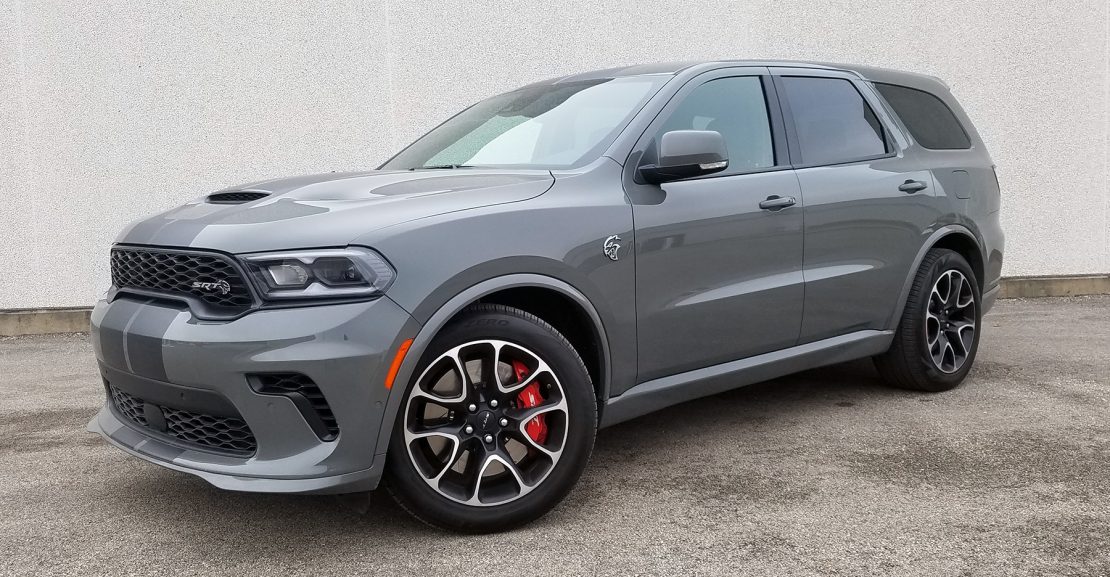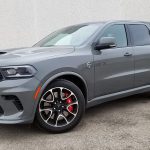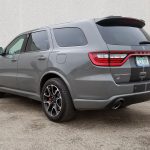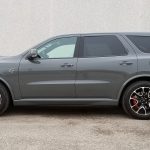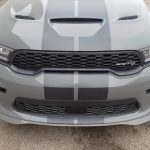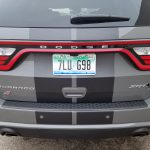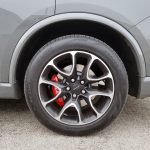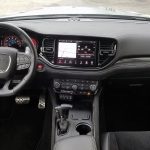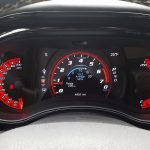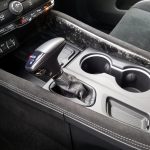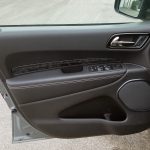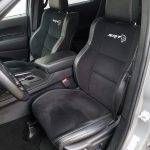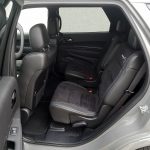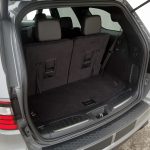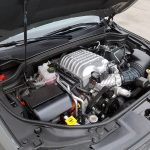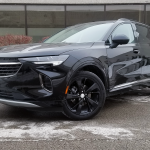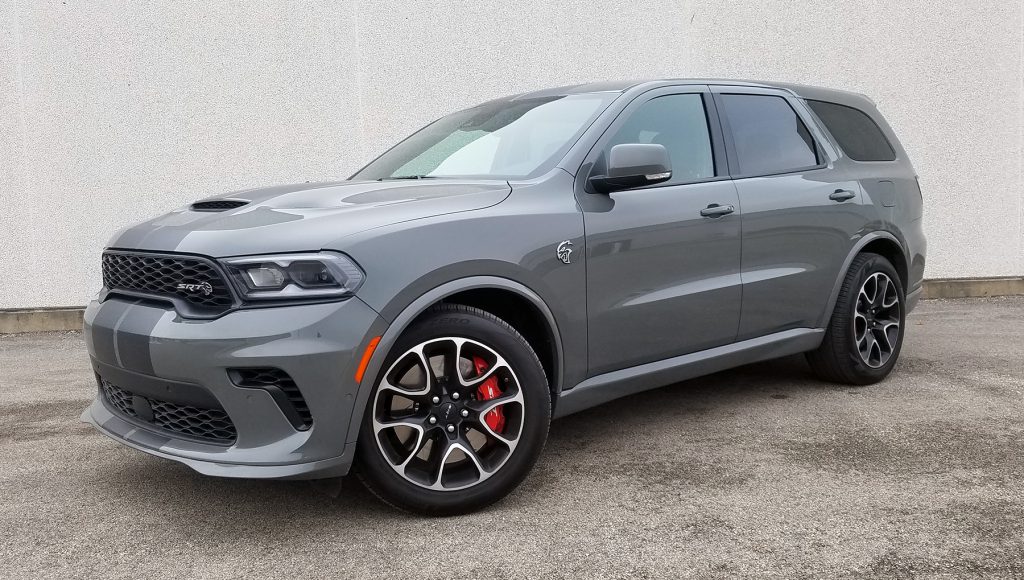
 2021 Dodge Durango SRT Hellcat
2021 Dodge Durango SRT Hellcat
Class: Large SUV
Miles driven: 151
Fuel used: 14.5 gallons
Real-world fuel economy: 10.4
| CG Report Card | |
|---|---|
| Room and Comfort | B+ |
| Power and Performance | A+ |
| Fit and Finish | B+ |
| Fuel Economy | D- |
| Value | C- |
| Report-card grades are derived from a consensus of test-driver evaluations. All grades are versus other vehicles in the same class. Value grade is for specific trim level evaluated, and may not reflect Consumer Guide's impressions of the entire model lineup. | |
| Big & Tall Comfort | |
| Big Guy | A |
| Tall Guy | A |
| Big & Tall comfort ratings are for front seats only. "Big" rating based on male tester weighing approximately 350 pounds, "Tall" rating based on 6'6"-tall male tester. | |
| Drivetrain | |
| Engine Specs | 710-hp 6.2-liter |
| Engine Type | Supercharged V8 |
| Transmission | 8-speed automatic |
| Drive Wheels | AWD |
Driving mix: 65% city, 35% highway
EPA-estimated fuel economy: 12/17/13 (city, highway, combined)
Fuel type: Premium gas required
Base price: $80,995 (not including $1495 destination charge)
Options on test vehicle: Technology Group ($2395), Premium Interior Group ($2495) low-gloss Gunmetal dual stripes by Mopar ($1195), Pirelli P-Zero 3-season tires ($595), Blind-Spot and Cross-Path Detection ($495)
Price as tested: $89,665
Quick Hits
The great: World-beating acceleration for a large 3-row SUV; impressive stopping power and crisp handling for the size
The good: Comfortable, spacious interior; muscle-machine looks and attitude
The not so good: Terrible fuel economy; performance suspension makes for a choppy ride; macho exhaust note can grow tiresome on long drives; despite smart updates for 2021, basic Durango design is showing its age
More Durango price and availability information
John Biel
The Dodge Division of the last decade has demonstrated time and again that it lives by this simple rule: When in doubt, throw more horsepower at it. Anything with an engine bay large enough to accommodate a Hemi V8—and by process of elimination that is now everything in the brand’s lineup—is a candidate to get the supercharged Hellcat version of that engine. That’s why the world of 2021 has a 710-horsepower sport-utility vehicle.
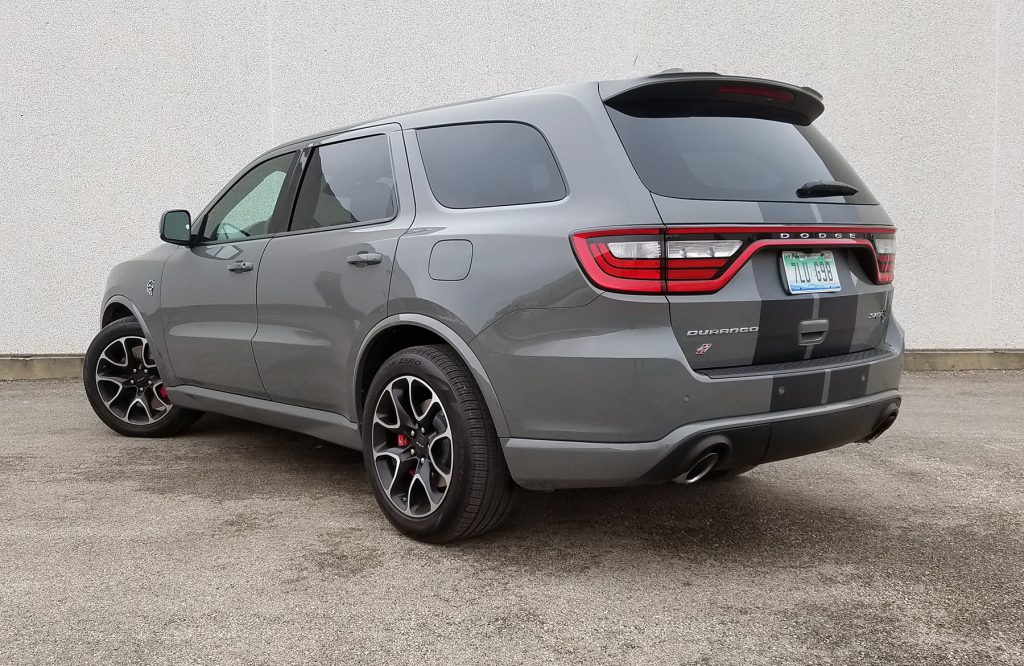
The new Durango SRT Hellcat builds on other muscled-up models Dodge has devised for its large crossover SUV, then blows the top off of them with its outrageous specs. Not the least of these details is its price. The starting tab, with delivery, is $82,490 but the one that Consumer Guide editors tested reached $89,665 with a couple of option packages and a trio of stand-alone extras. In the realm of 3-row SUVs, that’s the kind of money that conjures up thoughts of premium-brand German vehicles.
Test Drive: 2020 Chevrolet Corvette Stingray Coupe
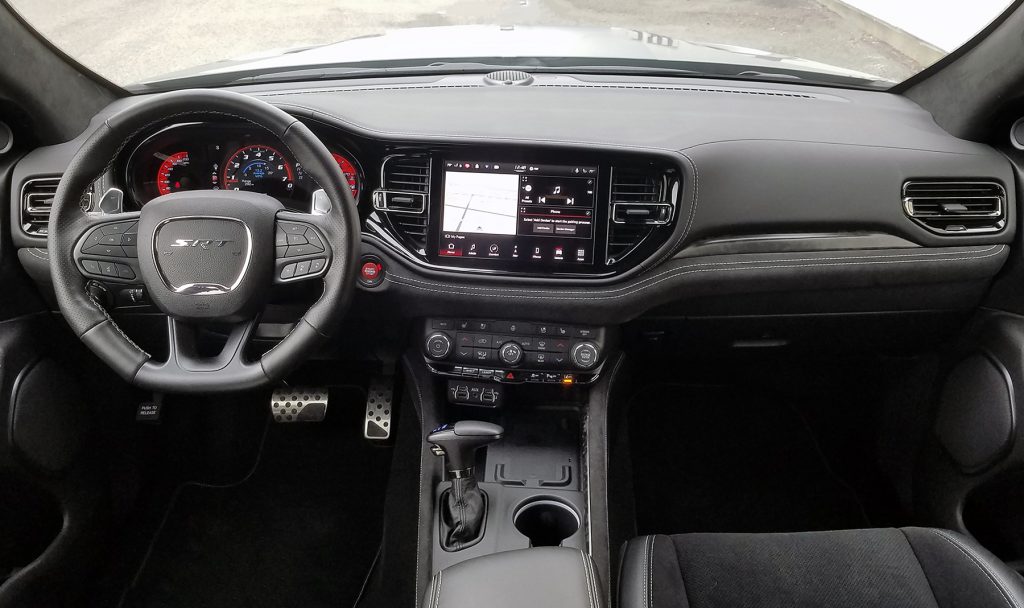
Judging by a few cursory figures—again, one of them being price—the Durango Hellcat is a relative budget bomb. High-performance V8 SUVs like the Mercedes AMG GLE 63 S and BMW X5 M start at more than $100,000, but their respective horsepower peaks are 603 and—with optional Competition package—617. Compare manufacturer-provided times and the Dodge is quickest to 60 mph from a standstill. It has a longer 119.8-inch wheelbase and a 200.8-inch overall length that’s 5.8 inches greater than either the GLE or X5. With all seats up, Durango’s 17.2 cubic feet of cargo capacity greatly lags the two German models, but that’s deceptive because while their basic designs have room for a third row, the extra seats aren’t available in the performance jobs. With second- and third-row seats down, the 85.1 cubic feet of space in the Durango is the most by far.

Possessed of 710 horsepower at 6100 rpm and 640 lb-ft of torque at 4300 rpm, Dodge says the Durango Hellcat will charge from zero to 60 mph in 3.5 seconds and run the quarter mile in 11.5 seconds in spite of a listed curb weight of 5710 pounds. The 6.2-liter powerplant fires up with a roar through the performance exhaust system, then settles into a menacing rumble that provides a bass line to the supercharger’s song. There’s no waiting for response—the Hellcat accelerates enthusiastically with every little bit of pedal travel, and your right foot doesn’t even have to be all the way to the floor before you realize you’ve got a tiger by the tail. The 8-speed automatic transmission (with steering-wheel paddle shifters) provides quick, positive downshifts for never-a-question-about-it passing.
Test Drive: 2021 Mercedes-Benz AMG GLE63 S
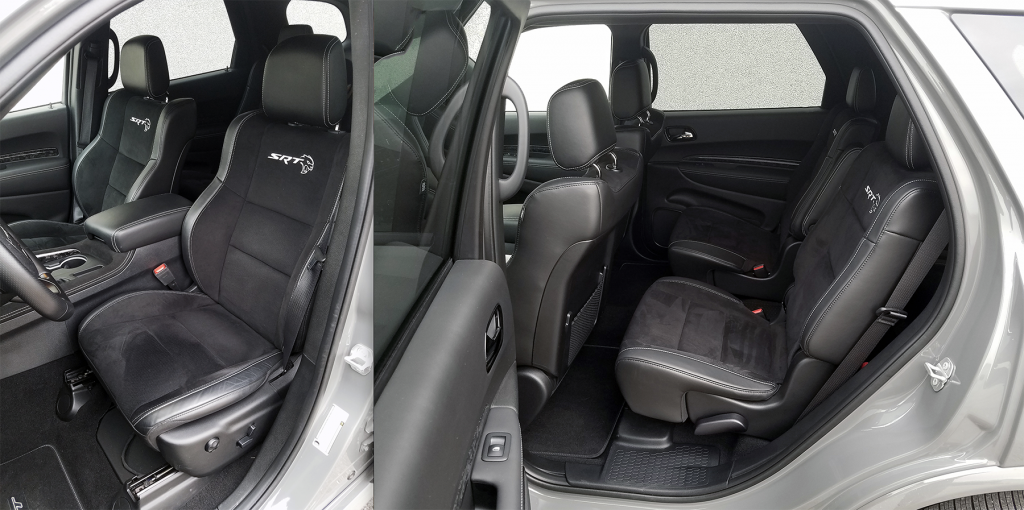
Like the 475-horsepower Durango SRT 392 that formerly topped the performance pecking order (but remains available), the Hellcat comes only with all-wheel drive. Traction is maximized by an electronic limited-slip rear axle and launch control. Steering and a suspension with adaptive dampers are tuned to the Hellcat’s particular capabilities. Ride is undeniably firm but not punishing, with an eye toward delivering better handling than a large-ish SUV probably ought to be able to have. There’s nice weight and precision to the steering, and Brembo 4-wheel disc brakes provide the kind of stopping power something this big and fast requires.
Test Drive: 2020 Aston Martin Vantage Coupe
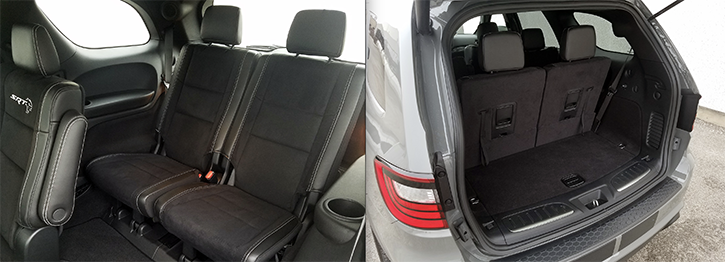
If you’re wondering what you might do with all that power at your disposal, the answer is you could tow something. The Durango Hellcat is rated to pull 8700 pounds. Is that the weight of a small gasoline tanker? It wouldn’t hurt, because the EPA projects that the Hellcat will make just 12 mpg in city driving, 17 mpg on the highway, and 13 combined. This reviewer recorded 12.2 mpg after driving 65 miles with 40 percent city-type operation.
Test Drive: 2020 Cadillac CT4-V
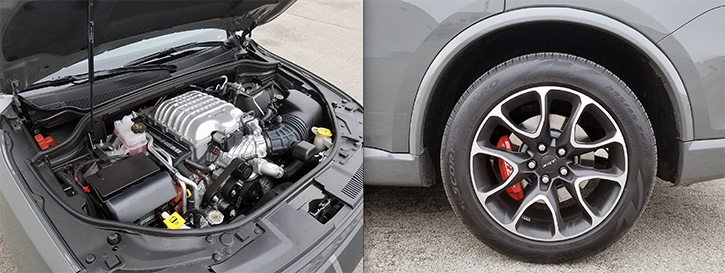
Hellcat appearances aren’t far removed from those of the SRT 392 that sells for $18,000 less. They share a hood with a functional scoop, body-color wheel-lip moldings and rocker-panel aero extensions, and bright dual-exhaust tips. Alloy wheels are 20 inches in diameter and 10 inches wide. However, the Hellcat has its own wheel design, front splitter, and rear valance panel—and Hellcat head logos appear on the grille, power liftgate, and front fenders.
Photo Feature: 1970 Dodge Coronet Super Bee
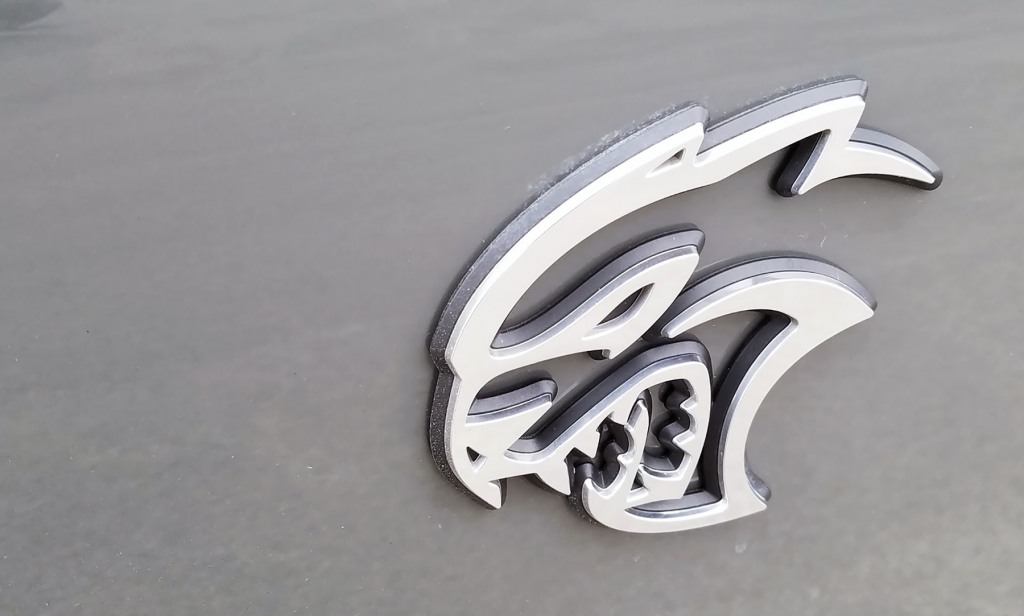
The same degree of similarity carries over into the interior. In both, upholstery is black suede with Nappa-leather trim and silver accent stitching; front sport seats have expanded side bolstering; captain’s chairs populate the second row; and drivers grip a heated, leather-wrapped steering wheel. The Hellcat does have its own logo embroidered in the seat backs.
New to the standard-equipment list is the Uconnect 5 infotainment system, conspicuous by its 10.1-inch touchscreen. The Hellcat has the version with navigation. Audio inputs are easy to make on the screen but benefit from external tuning and volume knobs. Dual-zone climate control has a convenient dial for setting fan speed, but numerous buttons for other tasks, including repetitive-push “arrows” for temperature selection.
With a platform and dimensions fundamentally the same since 2011, there isn’t much to say about Durango room and comfort that we haven’t already said in recent years. The BMW and Mercedes-Benz SUVs we mentioned before have comparable interior measurements despite their smaller footprints, and even best the Durango in shoulder room. But passengers in the Dodge won’t find themselves lacking for headroom in the front two rows. The third row has enough legroom and seat height for adults, but not as much headroom as in other seating rows. There are multiple handy storage units for personal items, and cup holders throughout. The cargo bay has a good-sized bin under the floor. Tech updates through the years have brought things like Apple CarPlay/Android Auto smartphone capability, wireless charging, a Wi-Fi hotspot, and front and rear parking assistance to the Durango, and they’re standard on the Hellcat. However, other now-common driving aids like blind-spot and rear cross-traffic alerts come at extra cost.
It’s hard to say that the Durango absolutely needed 700-plus horsepower. But being a modern-day Dodge, it’s just as hard to say that it could have avoided it.
Test Drive: 2020 BMW M8 Competition Convertible
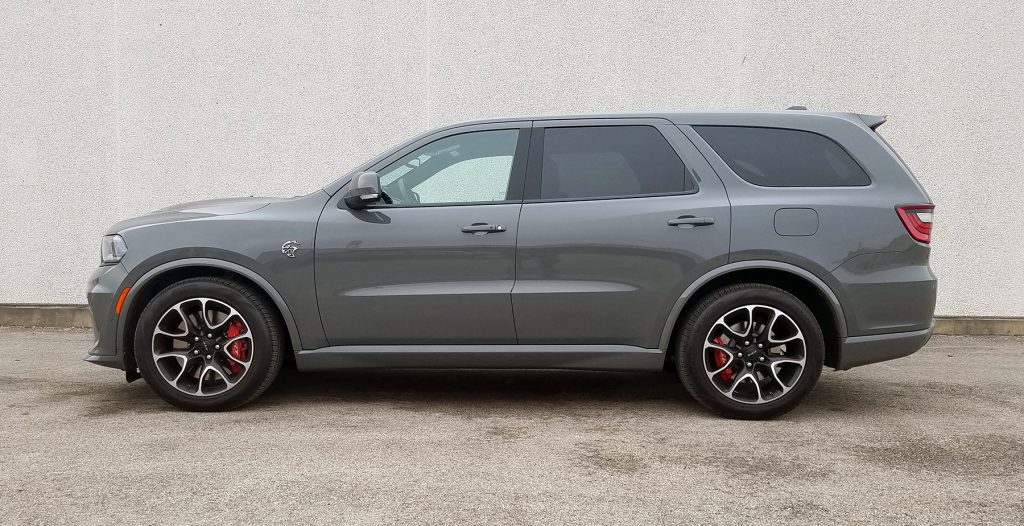
Listen to the Consumer Guide Car Stuff Podcast
2021 Dodge Durango SRT Hellcat Gallery
(Click below for enlarged images)
2021 Dodge Durango SRT Hellcat
First Spin: 2020 Dodge Charger SRT Hellcat and Charger Scat Pack Widebody

